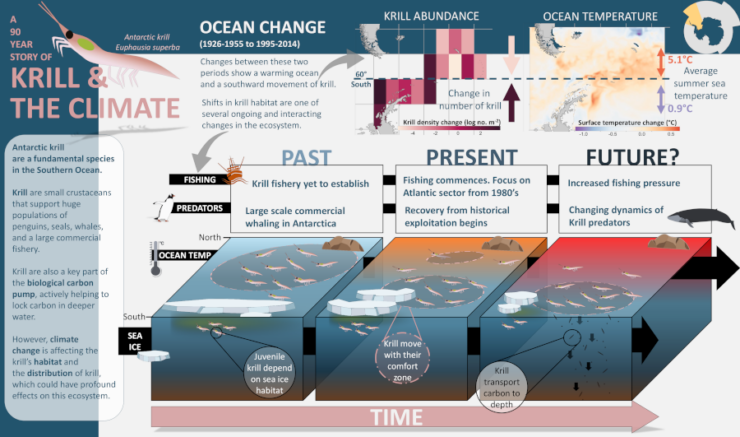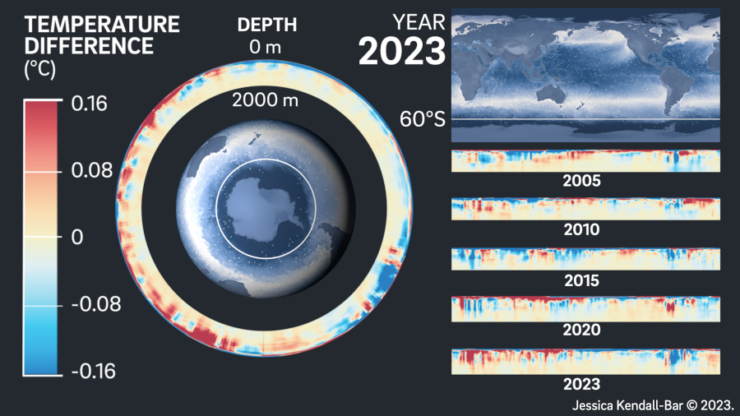We are very pleased to announce the winners of the SCAR EG-ABI data visualisation competition!
The brief was to produce a visualisation that conveys a message about climate change impacts on Antarctica and the Southern Ocean. We received a diverse range of entries from groups spread across 11 countries, addressing topics such as warming ocean and air temperatures, increasing atmospheric carbon dioxide, changes sea ice and in wildlife populations including those of krill and other marine organisms, and sea level rise. The results were depicted as animations, maps, charts, graphs, and infographics, generated using R, Python, Power BI, Excel, and other tools. Many of the entries provided their source code and data, allowing you to reproduce and build on these fantastic efforts! Our thanks to the judging panel: Dr Stephy Libera, Dr Patricia Castillo-Briceño, and Dr Peter Morse.
First place
Jennifer Freer, Tracey Dornan, Otis Brunner, and Vicky Dewar-Fowler (British Antarctic Survey, UK)

Our submission uses a combination of data analysis, mapping and 3D schematics to show how the environment and the distribution of Antarctic krill have changed between two time periods spanning 90 years (1926-1955 to 1995-2014). The time periods were selected were based on eras previously shown to have been important in understanding the shifting distribution of krill (Atkinson et al. 2019 Nature Climate Change; Atkinson et al. 2021, Global change Biology).
As well as documenting the change environment and krill, we felt it important to highlight these changes in the wider context of ecological change in the Southern Ocean. Thus, in our 3D schematics, we indicate the status of the krill fishery and krill-dependent predators for both time periods. Finally, we show the potential future of the Atlantic-sector of the Southern Ocean with regard to all of these factors: environment (sea-ice and temperature), krill distribution, predator dynamics and fishing pressure.
Our key message is that Antarctic krill are, and will continue to be, sensitive to climatic change. Interacting, cumulative ecosystem pressures will continue to have profound effects on this ecosystem.
Link to GitHub. We have used colorblind-friendly palettes, provided an ALT Text description of the graphic, and provided annotated code using accessible data sources.
Second place
Jessica Kendall-Bar, Sarah Purkey, and Megan Scanderbeg (Scripps Institution of Oceanography, USA)

